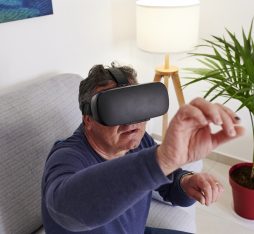The creature resembles a dollop of molasses or a slug that stretches, compresses and contorts according to the environment’s constraints. This is surprisingly a robot. Presented in late March 2022 in the journal Advanced Functional Materials, the robot is the result of work conducted by Chinese researchers at the University of Hong Kong and the Harbin Institute of Technology. The robot is composed of polymers, borax (a mineral) and neodymium particles (rare earth elements) and, sensitive to the movements of a magnet, is magnetically actuated.
Demonstrations testify to its ability to slip into 1.5 mm-wide conduits, as well as grip an object by wrapping itself around it.
The advantages of non-Newtonian fluids
Their designers acknowledge the robots’ reduced deformation capabilities compared with silicone and liquid-metal soft robots. But, they note, “Small elastomer-based robots cannot move in highly constrained environments. And although fluid-based soft robots show greater deformation capabilities, they are limited by an inherently unstable morphology which affects their adaptability to an environment.” This project has the qualities without the shortcomings of these two soft-robot categories. The innovation here lies in its design, using non-Newtonian fluids. That is to say, whose deformation varies according to the physical pressure it encounters.
The robot could enter the body without risking the tissue damage rigid instruments could inflict.
Although only in prototype, researchers see their use in medicine: robots could enter the body to deliver a drug to a specific location and explore hard-to-reach areas without risking the tissue damage rigid instruments could inflict. Robots are wrapped in silicon to avoid contact with their toxic materials.
A favorable context for innovation
Soft robotics exploit the ability of certain materials to deform and involve fields that at first glance seem far removed from robotics: continuum mechanics and fluid mechanics, chemistry, materials science, etc. In recent years, this field of research has benefited from a favorable scientific and institutional context (specifically, the European RoboSoft program), which led to a flurry of innovations. “The emergence of smart materials, new additive manufacturing processes (3D and 4D printing), meta-materials, all contributed to the development of soft robotics,” observes robotics specialist Helmut Hauser at the University of Bristol.
Soft robotics’ fields of application range from industry to agriculture and the environment. But like the robots from the University of Hong Kong, uses in the medical field seem particularly promising. “Soft materials easily adapt to the flexibility of biological entities. Their softness makes them potentially safer. Generally speaking, any use in proximity to humans can benefit from soft robotics systems: exoskeleton, human-machine interaction, virtual reality, rehabilitation, geriatrics…,” explains Hauser.
A water-based gel caterpillar
At the end of 2022, Johns Hopkins University unveiled a “caterpillar” made of a water-based gel which swells or contracts depending on the temperature of the surfaces it is in contact with. It moves forward thanks to its change in size, which again makes it an ideal vehicle for depositing a drug inside the body.
The approach is different at Harvard, where the work conducted by the Wyss Institute combines prosthetics with soft robots. Their elastomer Magenta system, announced in 2022, is used to fight muscle atrophy. A component made of nitinol, a nickel-titanium alloy, acts like a spring when triggered by the heat of an electric current. In 2021, a startup from this institute marketed a glove for hand rehabilitation following a stroke. A pneumatic system triggers the movements of the fingers. When robots are able to take control over humans, it could be for the good of humans.











